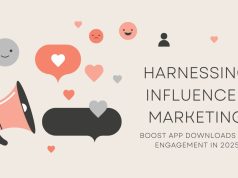In the era of evolving privacy regulations and platform restrictions, app marketers must pivot toward privacy-first strategies that respect user preferences and ensure compliance. With Apple’s App Tracking Transparency framework and stringent GDPR enforcement, traditional cross-app tracking is no longer guaranteed. Today, success hinges on building trust, leveraging first-party data, and employing privacy-compliant technologies. This guide delivers actionable insights to adapt your app marketing for 2025’s post-IDFA landscape, helping you sustain growth, improve retention, and drive revenue without compromising user privacy.
Understanding the Post-IDFA Landscape
On iOS, Apple’s decision to require explicit user consent for IDFA access has disrupted attribution, retargeting, and personalized advertising. Estimates show opt-in rates below 25%, forcing marketers to rethink reliance on device-level identifiers. Android users face similar scrutiny with Google’s evolving privacy roadmap. As a result, attribution windows have shortened, and granular targeting has become less reliable. However, this shift also presents an opportunity: by centering strategies on user consent and transparency, brands can differentiate through trust, foster higher engagement, and unlock new forms of compliant personalization.

Key Privacy Regulations Impacting App Marketing
Beyond IDFA, global privacy laws such as GDPR in Europe, CCPA/CPRA in California, LGPD in Brazil, and PDPA in Southeast Asia set strict rules on data collection, storage, and sharing. Each regulation mandates clear consent mechanisms, data minimization, and user rights like access and deletion. Non-compliance can incur hefty fines and damage brand reputation. For app marketers, this means auditing data flows, updating privacy policies, and implementing consent management platforms (CMPs) that capture lawful permissions at every touchpoint. A proactive compliance approach not only avoids penalties but also strengthens user trust as a core brand differentiator.
Building a Privacy-First Marketing Strategy
A privacy-first marketing strategy places user control and transparency at its center. Start with a privacy audit: map all data collection points, identify third-party SDKs, and eliminate unnecessary trackers. Next, define a clear value exchange: explain what data you collect, why you need it, and how it enhances user experience. Use plain language in in-app prompts and policies rather than legal jargon. Train your marketing, product, and engineering teams on privacy best practices and embed privacy by design into every new feature or campaign to maintain compliance as you scale.

Harnessing First-Party Data & Contextual Targeting
With third-party identifiers diminished, first-party data becomes your most valuable asset. Collect user preferences, behavioral signals, and in-app actions through opt-in analytics and CRM integrations. Leverage this data to build audience segments based on real usage patterns rather than inferred interests. Complement first-party data with contextual advertising that targets placements based on app category, content, or user journey stage. Contextual ads can achieve brand-safe reach without relying on personal identifiers, and they often deliver higher engagement due to their relevance to the immediate environment.
Privacy-Compliant Analytics & Attribution Models
Traditional last-click attribution is less reliable under privacy constraints. Explore privacy-first measurement solutions such as Apple’s SKAdNetwork for iOS and Google’s Privacy Sandbox for Android, which offer deterministic attribution without exposing raw user-level data. Augment these tools with aggregated event measurement, probabilistic modeling, and multi-touch attribution frameworks that synthesize data at the cohort level. Ensure your analytics provider supports differential privacy or data anonymization to prevent user reidentification while still delivering actionable insights on campaign performance.

Designing Effective Consent & Preference Centers
Consent management is more than a one-time prompt. A well-designed preference center lets users modify permissions, opt into specific data uses, or revoke consent at any time. Integrate preference settings into your app’s settings menu and send periodic reminders about privacy options. Personalize consent flows by grouping related permissions (analytics, push messaging, personalization) and explaining benefits clearly. A transparent, user-centric consent experience can boost opt-in rates while reinforcing brand integrity and compliance with global regulations.
Balancing Personalization with Privacy
Personalization drives engagement, but under privacy-first constraints, it must rely on on-device processing and aggregated signals. Implement in-app machine learning models that tailor content or recommendations without sending raw data to external servers. Use session-based retargeting and dynamic content blocks informed by recent user actions. When requesting deeper profile data, highlight tangible benefits—such as personalized deals or streamlined workflows—to encourage voluntary sharing. This balanced approach ensures a high-quality user experience while respecting individual privacy choices.
Future Trends & Conclusion
Looking ahead, privacy regulations will continue to evolve, with more regions adopting robust data protection laws. Advances in federated learning, on-device AI, and encrypted data protocols will unlock new opportunities for personalization without compromising privacy. Marketers who embrace these innovations early, transparently communicate their benefits, and prioritize user control will build lasting customer relationships and sustainable growth. By adopting a privacy-first mindset today, you position your app brand to thrive in 2025’s dynamic regulatory environment and beyond.







